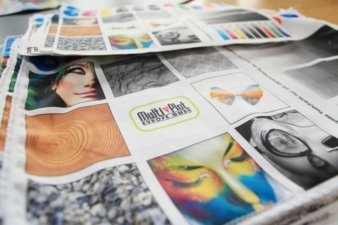29/01/2018 – Textile printing – Part 1 — auf Deutsch lesen
Digital becomes the norm – the transformation of textile printing
Digital print technology provides opportunities to create new and original surface designs quickly.
And this from creating samples all the way through to industrial production. The Apple slogan from 2009, "Anything that can be digital is being digitised" is a motto for the shift from analogue to digital that has already changed society and the world of work, in textiles as elsewhere.
The desire for personalisation is deeply embedded within us. From creating samples all the way through to industrial production, digital print technology provides opportunities to create new and original fabric designs quickly. Conventional print processes such as silkscreen and flat screen printing are mature technologies that have been embedded in the market for many years. But due to the high initial costs of the printing stencil, restrictions on the number of colours, the limits of pattern repeats and the setup time on the equipment, they are economical only for large production runs. Manufacturing lead times, moreover, are time-consuming and warehousing is expensive.
Digital printing, by contrast, requires no stencils and thus no initial costs; it functions without pattern repeats and offers a wide choice of colours in photographic print quality. Design and image information can be realised individually and dynamically, without the restrictions of repeating patterns, in a simple and contactless inkjet system. In comparison with conventional printing processes, ink consumption is significantly lower, resulting in lower energy consumption for the drying process and less pollution in the waste water. Almost all of the ink required is used on the print. The benefits of digital print data are a simple storage system, simplicity of making changes, and rapid distribution and processing. Printed products no longer need to be stored in their printed state until sold – a stock of unprinted goods is sufficient. This saves a lot of space as well as money. Reproduceability and production on demand are important elements of fast, networked Industry 4.0 processes. This is a model of the future that is becoming ever more relevant to the textile industry as well.
Read the whole article by Jo Rees in our printed issue textile network 1-2 2018 which appears 25th January 2018)




